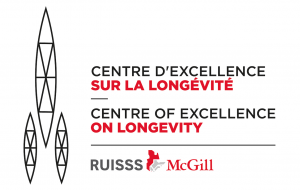[vc_row][vc_column width=”1/4″][vc_column_text]Partners
- Université de Montréal Institute of Geriatrics (IUGM)
[/vc_column_text][/vc_column][vc_column width=”3/4″][vc_column_text]Context
The areas of the brain that are used in controlling gait during the aging process have been widely studied using diverse neuroimaging methods including MRI, nuclear imaging, electroencephalography, and spectroscopy. An extended bilateral network, consisting of grey matter and white matter, with a principal contribution of various regions on the frontal lobe, has been associated with gait control. MRI is the most widely used neuroimaging method in the study of gait control, and multiple studies have been performed to understand the neural correlates that govern gait. Both a reduction and an increase in brain volume have been associated with gait-related conditions. These differences in results may be explained by the wide variety of measurements of gait performance or differences in the populations being studied. In fact, in cohorts consisting of elderly patients not suffering from dementia, participants may nevertheless be affected by the very early stages of cognitive decline, such as a subjective cognitive issue or mild cognitive deficit. These patients are mixed in with individuals who are in good health, and thus unaffected by any underlying cognitive conditions. By complementing methodological approaches to evaluate functional and structural connectivity, structural anatomical covariance provides an alternative approach to the study of the topographical organization of the brain, which has never been studied in evaluating the effect of age on gait control. Due to the extent of the networks that have been involved in controlling gait in the aging process, the structural covariance model may assist in the summation of the results of structural and functional studies. Moreover, it is increasingly the case that evidence demonstrates that cognitive changes that are observed during the aging process are associated with variations in the structural covariance of cerebral networks. As a complement to the various neuroimaging approaches studied to address age-related changes in gait control, we have proposed that the use of anatomical structural covariance could enhance our understanding of the physiopathological methods by which age-related changes in gait control occur.
Objective
> To characterize the structural covariance networks in grey matter associated with gait in elderly patients not suffering from dementia in various states of gait performance.
Actions
- Agreement to access the GAIT database
- Identification of regions of the brain showing a correlation between volume of grey matter and walking speed
- Use of these regions as a reference to identify networks of structural covariance
- A study into difference in networks of structural covariance between slow, normal and rapid walking speeds
- Authorship of an article in a scientific journal
[/vc_column_text][/vc_column][/vc_row]



